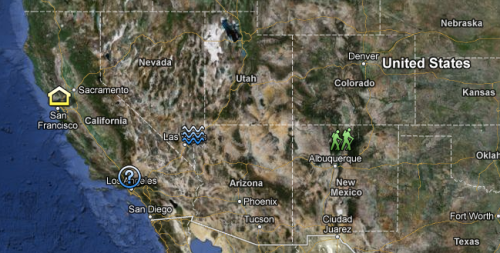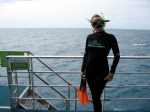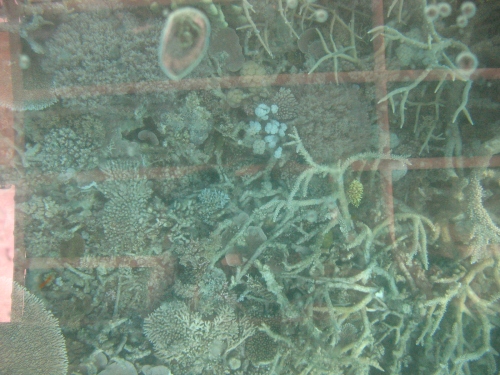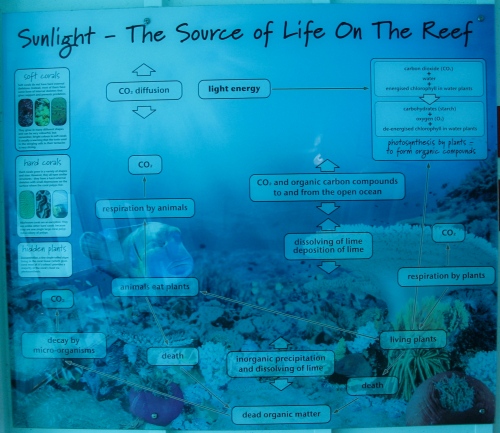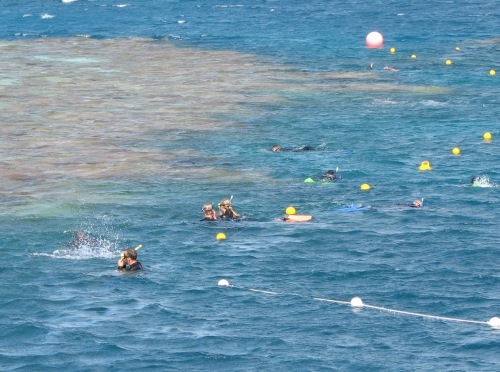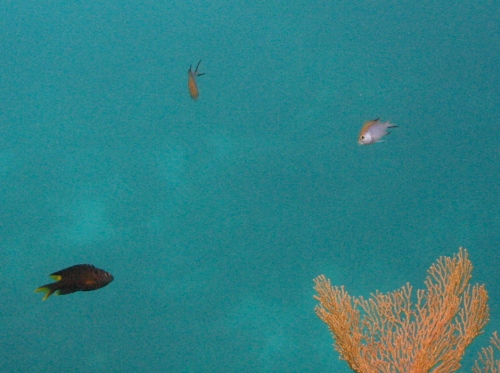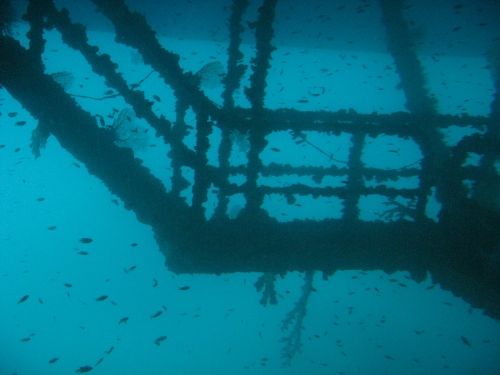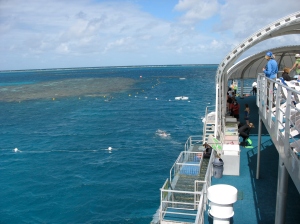 Are there places where science tourists shouldn’t go? Sometimes, visiting a destination also affects that destination. In a forest, it’s easy to minimize the damage: stay on the paths, pick up garbage, don’t scare the animals. But what if the place you want to visit is delicate, and has no paths to stay on – like a coral reef?
Are there places where science tourists shouldn’t go? Sometimes, visiting a destination also affects that destination. In a forest, it’s easy to minimize the damage: stay on the paths, pick up garbage, don’t scare the animals. But what if the place you want to visit is delicate, and has no paths to stay on – like a coral reef?
The Great Barrier Reef runs along the coast of Queensland and is the largest “superorganism” on earth (It can be seen from space, but, honestly, what can’t be seen from space these days). Even though it’s quite a distance from shore, it’s visited yearly by more than a million tourists and brings in several billion dollars each year.
In 2009, I was one of these tourists. I visited the Great Barrier Reef on a day trip from the Whitsundays. A boat took us out to a pontoon, where you could go snorkeling or diving, and take a trip on a glass bottom boat to look at the reef.
It was a cloudy day, so the reef was not as bright as on pictures, but still pretty.
The area where we were allowed to snorkel was marked with a rope, to prevent people from going on top of the reef, and we weren’t allowed to touch anything. The companies that organise the reef tours – at least the larger ones – abide by eco policies to ensure that the reef doesn’t get damaged. Educating us about the reef and the fish was one part of the policy.
But human visitors are not the most damaging to the reef, by far. A study last year showed that the major factors involved in the massive reduction of the Great Barrier Reef over the past years were hurricanes and star fish. Coral bleaching, related to water pollution, was also responsible for reef decline, though, and that is a result of tourism. However, it’s not so much the people who damage the reefs at the pontoon sites, but birds. Birds love using the pontoons as a rest stop, and their poop washes into the water and damages the coral.
As part of their eco certification, reef tour companies also try to reduce the bird poop problem, for example by discouraging birds from landing on the pontoon.
Ultimately, it’s possible to visit the reef without damaging it too much, and that’s awesome, because it really is a GREAT barrier reef.
Here’s a little video of my visit. The first part is at the Whitsundays, and the rest is near the pontoon at the Great Barrier Reef.
You can follow all our science-y travels on the Have Science Will Travel map.